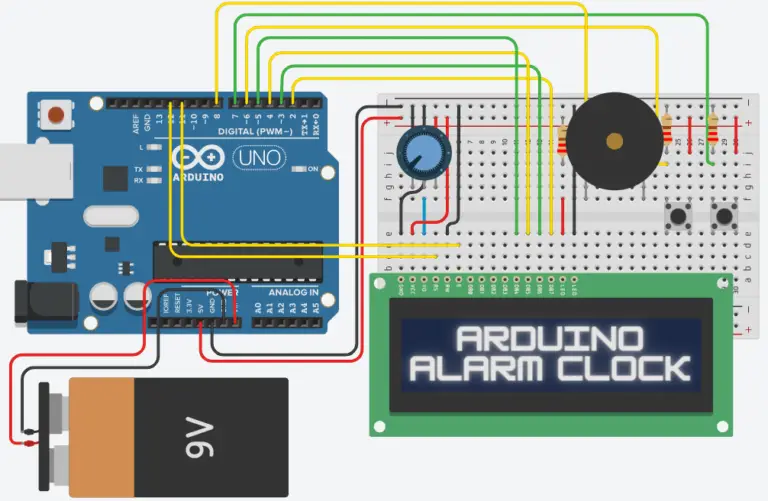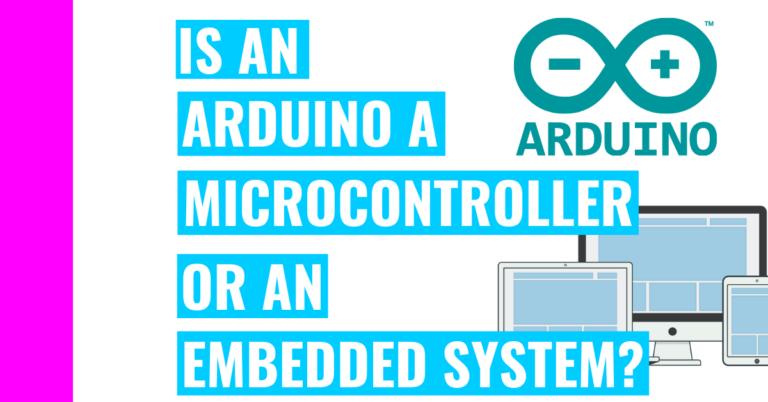What’s The Difference Between Arduino and PLC?
In my Arduino journey and exploration, I’ve noticed a lot of modules and tech similar to Arduino. For example, I’ve learned about microcontrollers and embedded systems, and how they’re related to Arduino.
A few weeks ago, I stumbled onto something known as PLC or programmable logic controller. Naturally, my curiosity about this device grew the more I researched about it. Now that I have a solid understanding of it, I want to write this guide for those who want to know the difference between an Arduino and a PLC.
What is Arduino?
The Arduino itself is a microcontroller development board. That doesn’t mean it’s a microcontroller itself. Instead, it means that the Arduino board contains a microcontroller chip called the ATmega328P in addition to other components that serve other purposes.
For instance, besides the ATmega328P, the Arduino Uno has memory, peripherals, input/output (I/O), and a processor. These features are present in the physical components on the Arduino board, such as analog input pins, TX RX LEDs, digital pins, voltage regulator, power port, crystal oscillator, reset button, USB interface chip, and USB (Universal Serial Bus) port.
Brief History of Arduino
In 2005, a company called Arduino created a product called an Arduino. It was initially started by Massimo Banzi, David Cuartielles, Tom Igoe, Gianluca Martino, and David Mellis as a research project at the Interaction Design Institute of Ivrea.
It was based off of the computer programming language Processing, which was created by Casey Reas and Ben Fry.
The company focused on both the hardware and software aspects to make it accessible and easy for the average person to use.
For the software side, the company created the Arduino IDE (Integrated Development Environment). For the hardware aspect, it created the Arduino (the most popular one as of now is the Arduino Uno R3).
What is PLC?
PLC stands for Programmable Logic Controller, and it has all the computer features that are industrialized for manufacturing purposes. PLCs can be used for assembly lines, robotics, reliability, ease of coding, and process fault diagnosis.
Similar to Arduino, it has many I/O (input/output) pins and a processor. The PLC can be connected to other PLCs or the SCADA (supervisory control and data acquisition) system.
Brief History of PLC
Dick Morley was dubbed the inventor of PLCs. He created the first one in 1968 for General Motors, and it was called the Modicon 084.
The great thing about PLC is that it is resistant to vibration, impact, electrical noise, dust, and any other features of a harsh environment. Moreover, a PLC can withstand a greater temperature range compared to Arduino.
Pros and Cons: Arduino Vs. PLC
Arduino Pros
- Arduino is very easy to use and set up.
- Arduino bridges the gap between utilizing hardware and software.
- Arduino possesses a great library and a great community.
- Arduino is well-suited to projects requiring batteries
Arduino Cons
- Arduino may be a little expensive
- Arduino can harm engineering student’s learning and projects
- Arduino is unsuitable for larger projects
- Arduino packs less power
I obtained these pros and cons from my other blog post on Arduino relevance in today’s society. Check that post out if you want more clarification on these points.
PLC Pros
- Well-suited to industrial uses
- Well-suited to harsh environments
- It’s easy to learn
- It’s fast to use
- It’s reliable and easy to troubleshoot
PLC Cons
- PLC may not be able to handle extreme harsh environmental conditions.
- PLC may involuntarily turn on after power is restored after a power outage. This unexpectedness can cause accidents.
- Resolving issues may take a while.
Which One Is Better: Arduino Or PLC?
Everything has its strengths and weaknesses, and Arduino and PLC are no different.
Arduino would be the best choice for hobbies, small projects, or beginners who want to start learning programming and circuits.
As I’ve mentioned before, the Arduino company created their Arduino products with the user in mind. They want to make this easy for everyone to understand and use. Even a few engineering students may take advantage of this and incorporate it into their projects. Consequently, some professors hate Arduinos because they don’t show the student’s knowledge and experience.
Moreover, if you get really stuck on a concept or can’t figure out a solution, you can submit your question in the Arduino forum. This is where the Arduino community shines because many Arduino users will answer your question. Hopefully, you will be able to understand their solution and advice and know what to do in the future.
For the PLC, it’s better suited to industrial uses like manufacturing. In fact, when it was first created, it was meant for manufacturing purposes. Moreover, it works very well in harsh environments, unlike the Arduino.
Summary – tl;dr (Too Long; Didn’t Read)
By now, you should better understand what a PLC is and how it’s different from Arduino. If it’s still not clear, here are the main points:
- An Arduino is a microcontroller development board that has many functionalities. These capabilities are enabled by the assortment of peripherals found on the board (besides the microcontroller chip), such as input/output pins, USB port, etc.
- The whole purpose of the Arduino is to make coding, electronics, and circuitry available, understandable, and accessible to everyone.
- That’s why Arduino is the best for beginners. There’s also a great Arduino community that can answer anyone’s questions in the Arduino forum.
- Still, the Arduino may be pricy for some people, and it can’t support large projects.
- If price is an issue for you, you can purchase an Arduino clone (from companies like Elegoo) or use online Arduino simulators like Tinkercad to get your feet wet.
- Still, the Arduino may be pricy for some people, and it can’t support large projects.
If you want to learn more about Tinkercad and how you can utilize it, check out my article on Arduino online simulators.
- A PLC is basically a more robust version of the Arduino that’s meant to handle tasks better than the Arduino. For instance, it can work in harsh conditions whereas the Arduino cannot.
- That’s why the PLC is mainly used for industrial purposes.
Even though the Arduino is small in size, there’s nothing small about its usefulness!
References
I’ve used the following sources to ensure my content is relevant and up-to-date:






